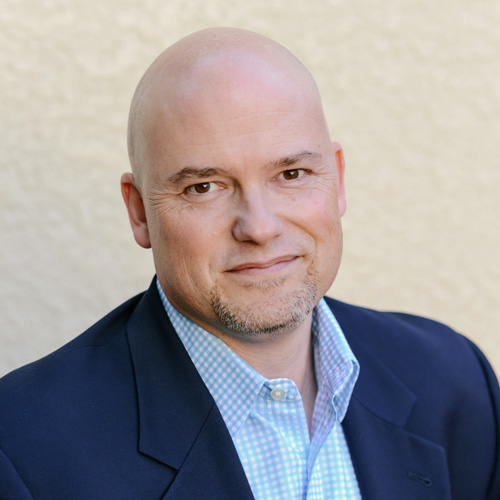If I can sum up my collective emotion over the past several months, I would describe it in one word – meh. Popularized in the Emoji movie, Meh is this apathetic character whose purpose in life is to convey the sentiment, “whatever”. Of course, when people greet me in the familiar, “How are you doing?”, I switch back to my default positive response, “I’m good” or “Doing fine”.
If I was really willing to be honest, or in the slightest bit vulnerable, I would say something to the effect of, “I really don’t know. I am struggling to find enjoyment in world around me and I feel like I am treading water. I can’t focus on tasks, and I am seriously considering a call to a therapist. How are you?”
Not something most people are ready to hear. At least that is what the voices in my head have been telling me.
All this came to a head about a month ago. As I was struggling to figure out why I was behaving this way, I ran across a podcast interview with Prince Harry. He and the interviewer were discussing mental health and he referenced a New York Times article, "There’s a Name for the Blah You’re Feeling: It’s Called Languishing."1 BAM! Here was my 2x4 across the back of the skull moment. The renounced royal, Prince Harry, the former Duke of Sussex, had just put a name to the funk I had been in for the majority of this year – languishing. I now had a name for my enemy. It was time to do battle.
It turns out that I am not alone. As I began to research and educate myself about this mental health challenge, I started recognizing the signs of languishing in my friends, family, and clients. As I began to share my experience with people, several of them began to open up as well. We need to rethink the stigma around mental health in both our personal and professional lives. Not depressed doesn’t mean that you are not struggling. Not burned out doesn’t mean that you are fired up. According to the experts with letters after their name, the mental health spectrum generally runs from depression to flourishing. Languishing is the misunderstood midpoint between these two ends of the spectrum.
As team leaders, we need to start recognizing these signs in ourselves and those who work with us and for us. Some of the descriptions of this middle state are inability to feel joy, stuck in limbo, apathy, uncertainty, anxiety, confusion, hopelessness, stagnation, and emptiness. One person described the feeling as “viewing the world through a foggy windshield”. Languishing is the absence of mental health.
So how did we get here? Better question. How did I get here? This was the most perplexing. In my naivety, I thought that I had dodged the COVID bullet. I thought my life was largely unaffected. My family was healthy, I was still gainfully employed, I still had the opportunity to go out and pursue leisure activities. I was so focused on feeling sorry for those who had been stricken by the pandemic, that I felt guilty for “having it so good.” What I came to discover was that I was not unaffected by everything from homeschooling to the alphabet soup of COVID variants. I thought the vaccine would give me my life back, but now the rug is being pulled out from under us again. The pandemic is a sneaky foe. It took its time and ground me down mentally.
After opening myself up to anyone willing to listen, I started to get an understanding of how this collective funk got its claws into my distribution clients.
Early on in the pandemic, we were scrambling with remote work environments, social distancing, and mask protocols. Distributors were resilient, but shifting sands take their toll. Salespeople struggled to work with their customers and now had to learn how to use video conferencing technology. Adaptation at its highest order.
As the pandemic wore on, we had to take on the ever-changing mandates with regard to public health and safety. Then, the business climate went completely crazy. In many verticals, customer demand went through the roof. Product scarcity became the new normal. Rampant inflation has led to distributors being inundated with constant price increases and challenging customer interactions. Distribution salespeople have had to have more difficult conversations with customers than ever before.
But wait — there’s more. Job vacancies have skyrocketed. Our team members are being asked to work longer and harder than ever before. All of these business stressors layered on top of the personal challenges of living in a pandemic-regulated world are bringing our people to the breaking point. The last straw is coming, and the camel’s back is getting weak.
Now that I have outlined the problems, as I see them, I want to share some solutions.
As a leader, either of a team or simply your own life, you must find ways to break this collective malaise. In doing some deep dive research on the subject, I have found that most mental health experts suggest that finding “flow" is a way to break out of this state. Flow is that state of mind where you can focus on a task and take it to a logical conclusion. Disruption is the killer of flow.
 Many of us found that trying to work out of the home, with children and TV remotes present, made it extremely difficult to concentrate on meaningful work. To get into a flow, many experts suggest that doing something mentally challenging in the morning, for a sustained period, will set you up for success later in the day. One expert starts his day off with crossword puzzles to get his mind engaged in a positive way. Others suggest that exercise and meditation are ways to reframe your mental state. The key is to be intentional with this practice.
Many of us found that trying to work out of the home, with children and TV remotes present, made it extremely difficult to concentrate on meaningful work. To get into a flow, many experts suggest that doing something mentally challenging in the morning, for a sustained period, will set you up for success later in the day. One expert starts his day off with crossword puzzles to get his mind engaged in a positive way. Others suggest that exercise and meditation are ways to reframe your mental state. The key is to be intentional with this practice.
I recently discussed this topic with a group of clients that I do facilitation work with. I must say that I was a bit apprehensive to bring up the subject. I tend to be an open book, but perhaps I was opening the kimono a bit too far. As is often the case, they rose to the occasion. Many of them admitted to the group that they were also struggling and were finally glad to have a word that described their current mental state.
Where my group really shined was in the sharing of solutions. Here are some of the things they offered:
- Get some fresh air. Go for a walk around the building.
- Make sure to prioritize exercise.
- Stay in the present. Don’t spend too much time on the future.
- Focus on small goals. Acknowledge small wins on a daily basis.
- Step back and don’t react. Let the answers come to you.
- Limit consumption of toxic broadcast and social media.
This last one really hit me. The person shared that she used to listen to the sensational news organizations on her long daily commute to work. By the time she made it to work, she found herself stressed out and irritable. This negative mindset would carry into work situations and lead to challenging interactions. One day, it occurred to her that the constant negative energy coming from toxic news broadcasts was leading to her difficulties in the workplace. She stopped listening to the news and has found herself listening to podcasts, audiobooks, and other engaging content. She now comes into work with a fresh perspective and positive mental attitude. After listening to her story, I have cut off all social media feeds referring to where I live. I like it here. I don’t need to listen to others bash it.
From a corporate perspective, I have heard some of my group participants speak about employee engagement programs and professional mental health benefits for team members. One participant spoke about a program their company sponsors that gives team members the opportunity to speak with a counselor at no cost. Participation in the program is totally anonymous and utilization is on the rise.
One of the best things senior leadership can do right now is address the mental health of the employee base. They are struggling. Stand up in front of them and show empathy. Get vulnerable with your people. They need to know that they are not alone, and you are there to support them. Don’t let distance or schedule prevent you from getting face to face with the rank and file. Years ago, my brother who owns a large supply house used to visit all the locations and have breakfast talks with the team members. He got vulnerable. He shared about the company direction but, more importantly, he listened to their comments and concerns. This is a great to start the conversation about mental health.
Let’s face it, we have all been affected by the pandemic. Our batteries have been depleted. Now that you know that languishing is a real concern, I am challenging you to help your people break out of the rut. I know it is possible because I am close to getting there. If I can help in any way, please don’t hesitate to reach out.
1 Grant, Adam. "There's a Name for the Blah You're Feeling: It's Called Languishing." The New York Times, 19 April 2021, updated 29 July 2021.

